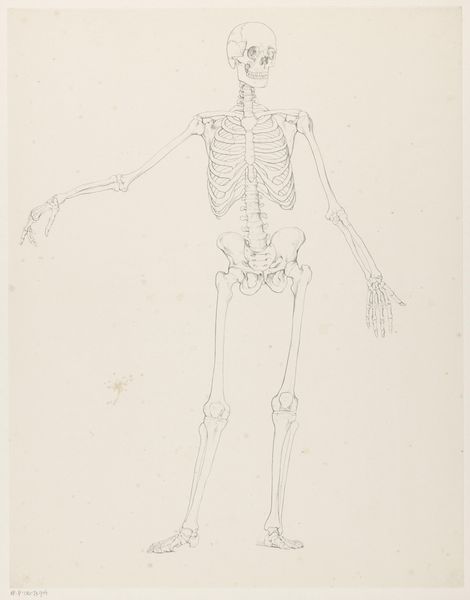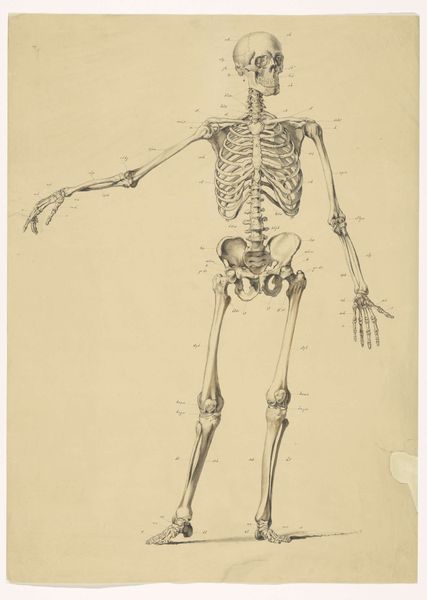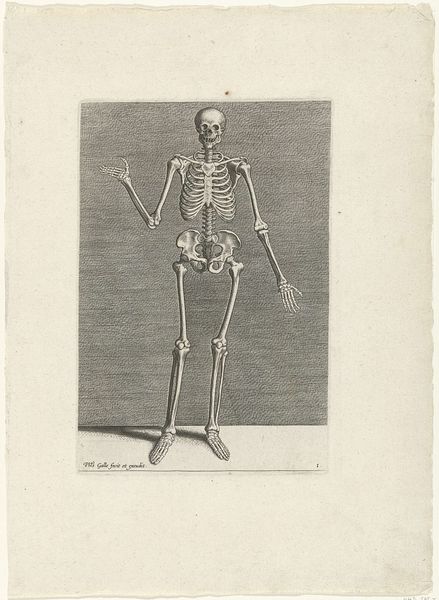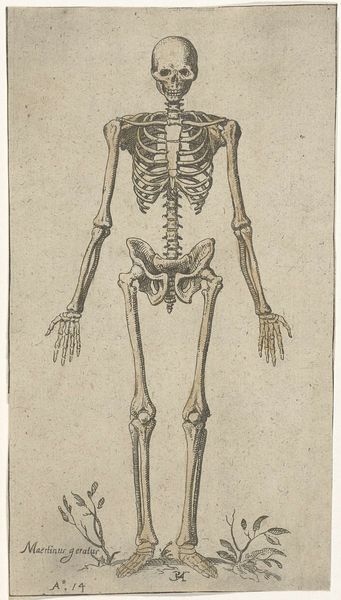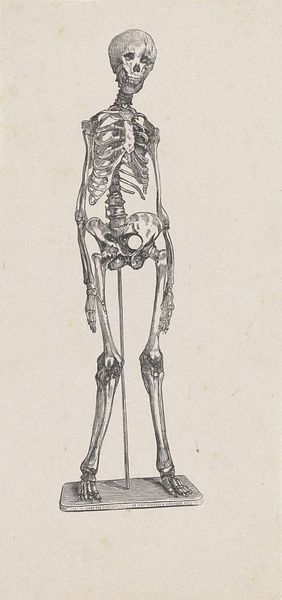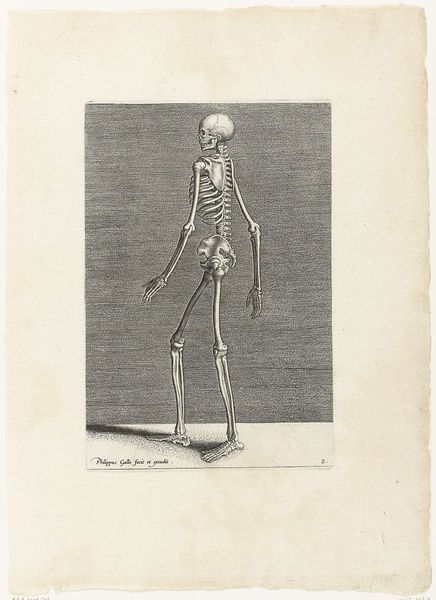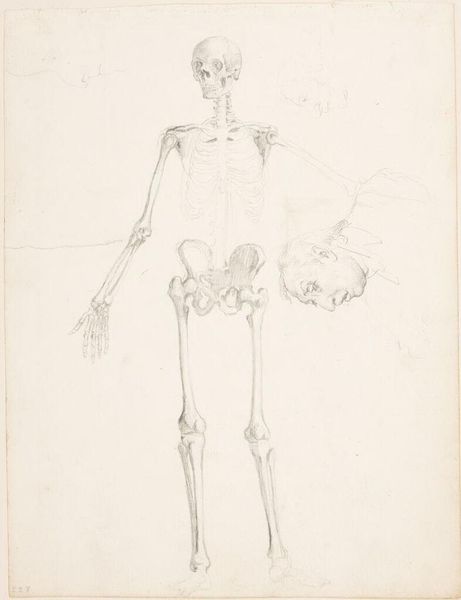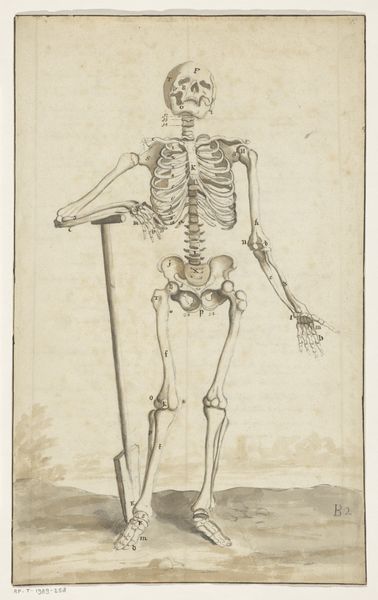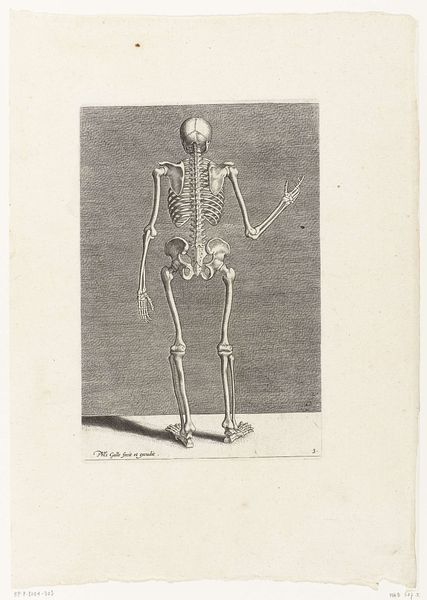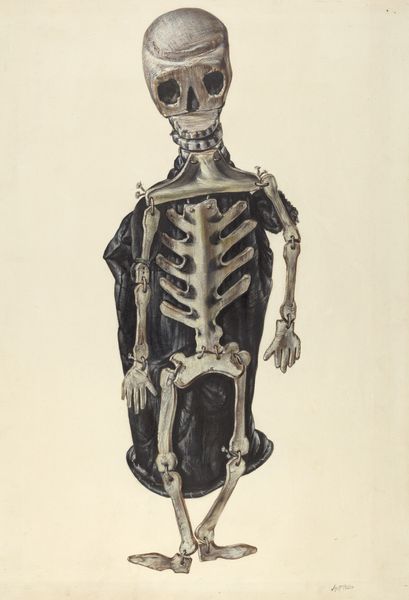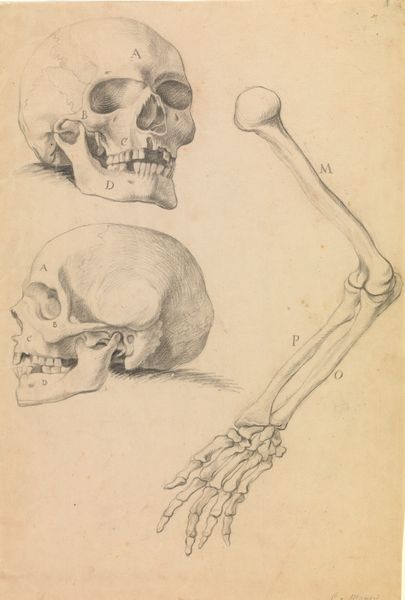
drawing, paper, ink
#
drawing
#
paper
#
ink
#
academic-art
#
nude
#
realism
Copyright: Public Domain: Artvee
Curator: Here we have George Stubbs’s ink drawing "Human Skeleton, Posterior View," created between 1795 and 1806. Editor: There’s something inherently haunting, even comical, about seeing a skeleton striking a pose. The starkness against the aged paper…it’s an anatomy lesson flirting with performance. Curator: Stubbs, best known for his equine paintings, possessed an exceptional understanding of anatomy. This drawing reflects the scientific culture of the late 18th century where detailed anatomical studies were considered a hallmark of academic art. Editor: Absolutely. But consider this: What does it mean to depict a nude body in its most essential form, stripping away identity markers yet implying humanity? There is a profound vulnerability in its openness and fragility. Is it making some comment on societal power? Who has it and who doesn’t, right down to our bones? Curator: Stubbs's involvement with dissecting and illustrating animals and humans stems from a desire to understand and accurately depict the physical world. There's a relationship to enlightenment ideals of scientific observation and categorization at play. Editor: Observation becomes interpretation, doesn’t it? Who got to define ‘accuracy’ or ‘truth’ in anatomical representation and how was that related to control over bodies? Even in rendering the bare bones, an artist reveals something of their social context. There's so much the body holds and represents beyond its physical form. Curator: I agree. He probably conceived this drawing for scientific illustration in lectures to medical students; these renderings served educational and public roles that very much intertwined with social status. Editor: So even this somewhat macabre study reflects on class, power, and mortality in its very depiction, doesn’t it? Thank you, that certainly contextualizes this skeleton's quiet drama. Curator: Yes, a testament to how art reveals hidden aspects of both the observer and the observed, a mirror that reflects historical understanding.
Comments
No comments
Be the first to comment and join the conversation on the ultimate creative platform.
